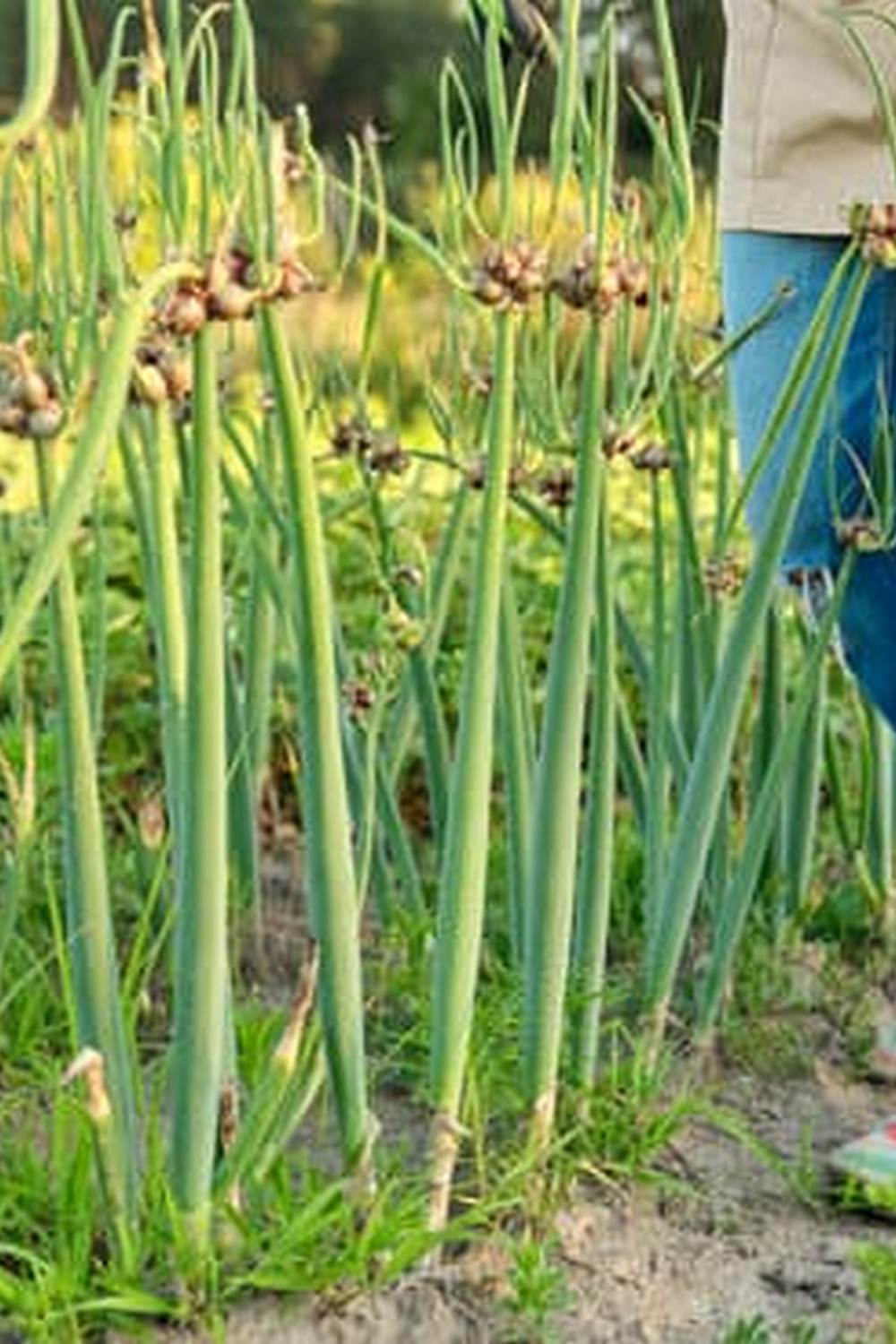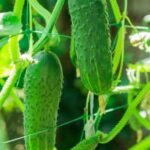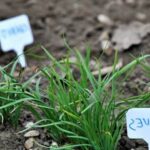Interested in sustainable gardening practices? If so, using rain barrels in vegetable gardens is a great way to conserve water and reduce your environmental impact.
By collecting and storing rainwater, you can ensure that your vegetable garden stays well-nourished, even during dry spells. In this article, we will explore the benefits of using rain barrels, how to set up and install them in your garden, tips for collecting and using rainwater effectively, real-life success stories, and the environmental impact of implementing this practice.
Using rain barrels in vegetable gardens offers a wide range of benefits. Not only does it help reduce your dependence on municipal water sources, but it also helps prevent stormwater runoff from carrying pollutants into nearby bodies of water. Additionally, utilizing rainwater for irrigation can lead to healthier plants and soil due to its natural composition and lack of added chemicals. With proper setup and maintenance, rain barrels can be an essential tool for sustainable gardening practices.
In the following sections, we will provide a comprehensive guide on setting up and installing rain barrels in your vegetable garden. From choosing the right type of barrel for your specific needs to maintaining and caring for it over time, we will cover everything you need to know to get started on utilizing this eco-friendly watering system.
Whether you are new to gardening or a seasoned pro looking to make environmentally conscious choices, incorporating rain barrels into your vegetable garden is a step towards a more sustainable lifestyle.
The Benefits of Using Rain Barrels
Using rain barrels in vegetable gardens offers numerous benefits for both the garden and the environment. By collecting and storing rainwater, you can reduce your reliance on municipal water sources and save money on your water bill. Additionally, using rainwater in your garden also helps to reduce stormwater runoff, which can carry pollutants into local waterways.
There are several key benefits to using rain barrels in vegetable gardens:
- Conserve Water: Using rain barrels helps to conserve water by capturing natural rainfall for later use in watering your vegetable garden.
- Save Money: By using stored rainwater, you can reduce your dependence on expensive municipal water sources, resulting in cost savings.
- Reduce Runoff: Collecting rainwater helps to decrease stormwater runoff, which can carry pollutants and cause erosion in local waterways.
In addition to these benefits, using rain barrels in vegetable gardens also promotes sustainable gardening practices and reduces the environmental impact of traditional water usage.
Overall, incorporating rain barrels into your vegetable garden is a practical way to conserve water, save money, and reduce environmental impact. With proper setup and maintenance, utilizing rain barrels can provide an eco-friendly solution for watering your garden while benefiting the environment.
How to Set Up and Install Rain Barrels in Your Vegetable Garden
Setting up and installing rain barrels in your vegetable garden is a great way to conserve water and reduce your environmental impact. Here are some steps to help you get started:
- Choose the right location: Select a spot in your garden that is close to a downspout from your home or any other structure where rainwater can be easily collected.
- Install a diverter: A diverter is a device that allows you to direct water into the rain barrel when it’s empty, but automatically diverts water away from the barrel once it’s full. This helps prevent overflow and potential flooding.
- Elevate the barrel: Place the rain barrel on cinder blocks or another stable platform to elevate it off the ground. This will make it easier for you to access the spigot at the bottom of the barrel when you need to use the collected water.
Once you have set up your rain barrel, it’s important to regularly maintain and care for it to ensure optimal performance:
- Clean the barrel: Periodically remove any debris, such as leaves or twigs, from the top of your rain barrel to prevent clogging and contamination of the water.
- Check for leaks: Inspect all connections and seals on your rain barrel regularly to ensure that there are no leaks that could result in wasted water or damage to your garden.
- Use collected water wisely: Be mindful of how you use the water collected in your rain barrel. Avoid using it on edible parts of vegetables, such as leafy greens, and instead focus on watering roots and soil directly.
By following these steps for setting up and maintaining rain barrels in your vegetable garden, you can effectively conserve water and promote sustainability in your gardening practices.
Choosing the Right Rain Barrel for Your Needs
When it comes to choosing the right rain barrel for your vegetable garden, there are several factors to consider. From size and material to additional features, making an informed decision is key to maximizing the benefits of rainwater harvesting.
Size and Capacity
One of the first considerations when choosing a rain barrel is its size and capacity. The size you choose will depend on the amount of rainfall your area typically receives and the size of your vegetable garden. For larger gardens or areas with high rainfall, a larger capacity rain barrel may be more suitable to ensure you can collect as much rainwater as possible.
Material
Rain barrels come in a variety of materials, including plastic, wood, and metal. Each material has its benefits and drawbacks. Plastic barrels are lightweight and durable, while wooden barrels may have a more aesthetic appeal. Consider factors such as durability, cost, and aesthetic preferences when choosing the material for your rain barrel.
Additional Features
Some rain barrels come with additional features such as spigots, hoses, filters, and overflow valves. These features can make it easier to use the collected rainwater in your vegetable garden. For example, a spigot makes it convenient to fill watering cans or connect a hose for irrigation. Consider which features are important for your specific needs when choosing the right rain barrel for your vegetable garden.
Considering these factors will help you choose the right rain barrel for your needs and maximize the benefits of collecting rainwater for your vegetable garden.
Maintenance and Care for Rain Barrels
There are a few important maintenance and care tasks to keep in mind when using rain barrels in vegetable gardens. Proper maintenance can ensure that your rain barrels continue to function effectively and provide you with a reliable source of water for your garden.
One important aspect of maintaining rain barrels is regular cleaning. Over time, debris, algae, and other contaminants can build up inside the barrel, potentially impacting the quality of the collected rainwater. It’s recommended to clean out your rain barrels at least once a year, or more frequently if you notice any issues. This can be done by emptying the barrel completely and scrubbing the interior with a brush and a solution of water and mild detergent.
In addition to cleaning, it’s also crucial to inspect your rain barrels for leaks or damage on a regular basis. Check for any cracks, holes, or worn-out seals that could compromise the integrity of the barrel. Make sure that the lid is intact and secure to prevent pests from getting into the water. By keeping an eye on the condition of your rain barrels, you can address any maintenance issues promptly and avoid potential problems down the line.
| Maintenance Task | Frequency |
|---|---|
| Cleaning | At least once a year |
| Inspection for leaks/damage | Regular basis |
Tips for Collecting and Using Rainwater in Your Garden
Implementing rain barrels in vegetable gardens is a sustainable and cost-effective way to collect and use rainwater for irrigation. By using rain barrels, gardeners can reduce their reliance on municipal water supplies, lower their water bills, and minimize the environmental impact of gardening. Here are some tips for effectively collecting and using rainwater in your garden.
First, consider the size and number of rain barrels you will need based on the size of your vegetable garden and average rainfall in your area. A general rule of thumb is that one inch of rainfall on a 1,000 square foot roof will yield approximately 600 gallons of water. Consider installing multiple rain barrels to capture as much rainwater as possible for use in your garden.
Next, position your rain barrels strategically to capture runoff from gutters and downspouts. Make sure to place them on a stable surface to prevent tipping or shifting. Install a fine mesh screen over the opening of the barrel to prevent debris from entering and mosquito larvae from breeding.
Finally, make sure to use the collected rainwater efficiently by connecting hoses or drip irrigation systems to the spigots on the bottom of the rain barrels. This allows for targeted watering directly at the root zone of plants, reducing water loss through evaporation. Additionally, consider adding a soaker hose attachment for even distribution of water throughout your vegetable garden.
| Benefits | Tips |
|---|---|
| Reduces reliance on municipal water supplies | Consider size and number of rain barrels needed |
| Lowers water bills | Strategically position rain barrels to capture runoff |
| Minimizes environmental impact | Connect hoses or drip irrigation systems for efficient use |
Success Stories
One success story of implementing rain barrels in a vegetable garden comes from the Smith family in suburban New Jersey. The Smiths decided to install rain barrels in their backyard after learning about the environmental benefits of collecting rainwater.
Not only did they reduce their water bill by using collected rainwater to irrigate their vegetable garden, but they also noticed an improvement in the overall health and growth of their crops. By using rain barrels, the Smiths were able to minimize their environmental impact and contribute to groundwater conservation efforts.
Another inspiring example is the Harris Community Garden in downtown Chicago, which serves as a model for sustainable urban agriculture. The garden has incorporated a system of rain barrels to collect and store rainwater for watering their vegetable plots.
This initiative has not only reduced the community garden’s reliance on municipal water sources, but it has also fostered a sense of environmental stewardship among its members. By utilizing rain barrels in their vegetable gardens, the Harris Community Garden demonstrates how urban spaces can embrace sustainable gardening practices that benefit both people and the planet.
In rural areas, such as in the Midwest, many farmers have also embraced the use of rain barrels in their vegetable gardens as part of their commitment to sustainable agriculture. Through proper collection and storage of rainwater, these farmers are realizing significant cost savings on watering their crops while reducing demand on local water supplies. Their success with rain barrel implementation serves as an example for other agricultural communities looking to minimize resource usage and promote eco-friendly farming practices.
Sustainable Gardening
Conservation of Water Resources
One of the key environmental benefits of using rain barrels in vegetable gardens is the conservation of water resources. By collecting and storing rainwater, gardeners can reduce their reliance on treated municipal water, which is often scarce and costly. This practice not only helps to conserve water supplies but also reduces the energy and resources required for water treatment and distribution.
Reduction of Stormwater Runoff
Another significant environmental impact of utilizing rain barrels in vegetable gardens is the reduction of stormwater runoff. When it rains, stormwater runoff can pick up pollutants such as pesticides, fertilizers, and sediments from urban areas, ultimately polluting natural water bodies. By capturing rainfall in rain barrels, gardeners can prevent excess runoff from their properties, contributing to the overall improvement of water quality in their communities.
Promotion of Sustainable Landscaping
Incorporating rain barrels into vegetable gardens also promotes sustainable landscaping practices. By reusing rainwater for irrigation purposes, gardeners minimize the need for environmentally harmful chemical fertilizers and reduce the energy consumption associated with pumping and treating water. Additionally, this practice encourages a more self-sufficient approach to gardening while fostering a deeper connection to the natural environment.
Implementing rain barrels in vegetable gardens not only benefits individual gardeners but also generates positive environmental impacts at both local and regional scales. From conserving water resources and reducing stormwater runoff to promoting sustainable landscaping practices, incorporating rain barrels into vegetable gardens plays a crucial role in creating a more environmentally friendly gardening experience.
Conclusion and Final Thoughts on Implementing Rain Barrels in Your Vegetable Garden
In conclusion, incorporating rain barrels into your vegetable garden can bring about numerous benefits for both your plants and the environment. By collecting and using rainwater, you can reduce your reliance on traditional water sources, lower your water bills, and conserve valuable resources. Additionally, utilizing rain barrels helps to mitigate stormwater runoff and prevent erosion, ultimately contributing to a healthier ecosystem.
Furthermore, the use of rain barrels in vegetable gardens promotes sustainable gardening practices, aligning with the growing movement towards environmental consciousness. By making small changes like harvesting rainwater, gardeners can play a significant role in lessening their impact on the planet and creating a more eco-friendly future. As such, implementing rain barrels into your gardening routine not only benefits the individual but also has far-reaching positive effects on the larger community and environment.
Incorporating rain barrels into your vegetable garden is an accessible and affordable way to promote environmentally friendly actions while maintaining a healthy and thriving garden. With proper maintenance and care, along with attention to choosing the right type of rain barrel for your needs, you can successfully collect and utilize rainwater in your garden to support the growth of your vegetables.
Whether through reducing water consumption or preventing soil erosion, these simple yet effective measures can make a significant difference in the sustainability of both your garden and our planet as a whole.
Frequently Asked Questions
Is It Safe to Use Rain Barrel Water on Vegetable Garden?
It is generally safe to use rain barrel water on a vegetable garden, as long as the water is not contaminated with any harmful substances. It’s important to use a screen or filter to prevent debris from entering the barrel.
How Do You Use Rainwater in a Vegetable Garden?
Rainwater can be used in a vegetable garden for watering plants, washing produce, and even filling up ponds or other water features. It can also be used to flush out irrigation lines and provide moisture during dry spells.
How Long Can Water Sit in a Rain Barrel?
The length of time water can sit in a rain barrel depends on various factors such as temperature, sunlight exposure, and whether the barrel is properly sealed. Generally, it’s best to use the collected rainwater within a week or two to prevent stagnation and possible mosquito breeding.

If you’re looking to get into vegetable gardening, or are just looking for some tips on how to make your current garden better, then you’ve come to the right place! My name is Ethel and I have been gardening for years. In this blog, I’m going to share with you some of my best tips on how to create a successful vegetable garden.





